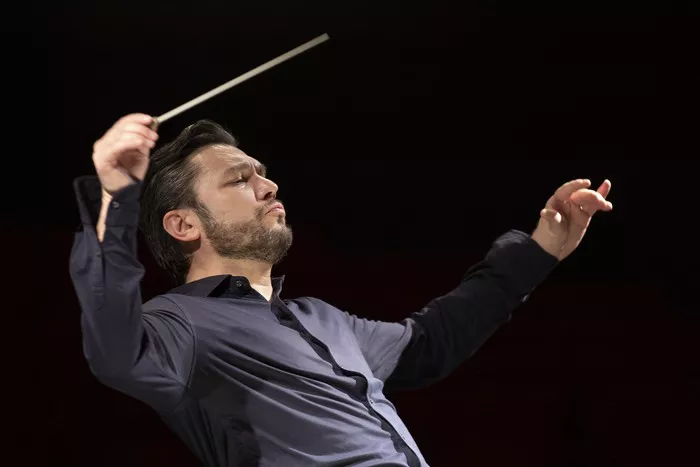Semi-classical music is a fascinating genre that sits at the crossroads of classical and popular music traditions. It blends the rigor and structure of classical music with the accessibility and appeal of popular music forms. This article delves into the nuances of semi-classical music, its history, characteristics, and significance in the global music landscape.
I. Historical Background
1. Origins and Evolution
Semi-classical music has roots in various musical traditions worldwide. It emerged as artists began to explore and experiment, blending classical music’s technical complexity with the simplicity and broad appeal of folk and popular music.
2. Indian Semi-Classical Music
In India, semi-classical music evolved from the classical traditions of Hindustani and Carnatic music. It incorporates elements from folk and popular music, making it more accessible to a wider audience. Notable forms include Thumri, Dadra, and Ghazal.
3. Western Semi-Classical Music
In the Western context, semi-classical music often refers to compositions that draw from classical music traditions but are structured to appeal to popular tastes. Examples include operettas, musical theater, and light classical pieces.
II. Key Characteristics
1. Melody and Rhythm
Semi-classical music maintains the melodic and rhythmic richness of classical music but often simplifies these elements to make the music more approachable. The melodies are usually more straightforward, and the rhythms, though complex, are often more repetitive and catchy.
2. Instrumentation
The instrumentation in semi-classical music is versatile. It combines traditional classical instruments with those commonly used in popular music. This fusion creates a unique sound that retains classical music’s depth while embracing the diversity of popular music.
3. Performance Style
Performance styles in semi-classical music are less rigid than in classical music. Artists often have more freedom to improvise and interpret the music in their own way. This flexibility adds a personal touch to performances, making them more engaging for audiences.
III. Notable Semi-Classical Music Forms
1. Thumri
Thumri is a form of semi-classical Indian music known for its expressive and romantic nature. It originated in the courts of North India and blends classical ragas with folk melodies. The lyrics often explore themes of love and devotion.
2. Dadra
Dadra is another Indian semi-classical form similar to Thumri but usually set to a lighter rhythm. It is characterized by its simplicity and lyrical beauty, making it popular in both classical and contemporary music circles.
3. Ghazal
Ghazal is a poetic form that has been set to music in many cultures, notably in South Asia. It combines classical music’s lyrical depth with the accessibility of popular music. Ghazals are often centered around themes of love and longing.
4. Operettas and Musicals
In the West, operettas and musicals represent semi-classical music. They blend classical music’s sophistication with popular music’s entertainment value. These forms are known for their engaging narratives, memorable melodies, and broad appeal.
IV. Influential Artists and Composers
1. Begum Akhtar
Begum Akhtar was a renowned Indian singer known for her contributions to the Ghazal and Thumri genres. Her emotive voice and nuanced performances helped popularize these semi-classical forms.
2. Johann Strauss II
Johann Strauss II, often referred to as the “Waltz King,” composed numerous operettas that remain popular today. His works exemplify the fusion of classical music techniques with the charm of popular music.
3. Jagjit Singh
Jagjit Singh was an iconic Ghazal singer who brought the genre to a global audience. His smooth, expressive voice and modern approach to Ghazal music made it accessible to a wider audience.
4. Andrew Lloyd Webber
Andrew Lloyd Webber is a prolific composer of musicals, blending classical music elements with contemporary themes. His works, such as “The Phantom of the Opera” and “Cats,” have become staples of musical theater.
V. The Role of Semi-Classical Music in Contemporary Culture
1. Bridging Cultural Gaps
Semi-classical music plays a crucial role in bridging cultural gaps. By combining elements from different musical traditions, it creates a universal language that can be appreciated by diverse audiences.
2. Promoting Musical Innovation
The fusion of classical and popular music elements in semi-classical music promotes innovation. Artists experiment with new sounds, styles, and techniques, pushing the boundaries of traditional music forms.
3. Enhancing Accessibility
Semi-classical music makes classical music more accessible to the general public. By simplifying complex musical structures and incorporating popular elements, it attracts listeners who might otherwise be intimidated by classical music.
VI. The Future of Semi-Classical Music
1. Embracing Technology
As technology continues to evolve, so does semi-classical music. Modern recording techniques, digital instruments, and online platforms allow artists to reach wider audiences and experiment with new sounds.
2. Global Collaborations
Global collaborations are becoming increasingly common in semi-classical music. Artists from different cultures and musical backgrounds come together to create unique, cross-cultural compositions.
3. Preserving Tradition
While embracing innovation, semi-classical music also plays a vital role in preserving musical traditions. By incorporating classical elements, it keeps these traditions alive and relevant in contemporary culture.
See Also: A Deep Dive into the Era of Classic Music: All You Want to Know
VII. Conclusion
Semi-classical music is a dynamic and evolving genre that celebrates the best of both classical and popular music traditions. Its rich history, diverse forms, and influential artists have left a lasting impact on the global music landscape. As it continues to evolve, semi-classical music promises to enchant audiences with its unique blend of tradition and innovation.

